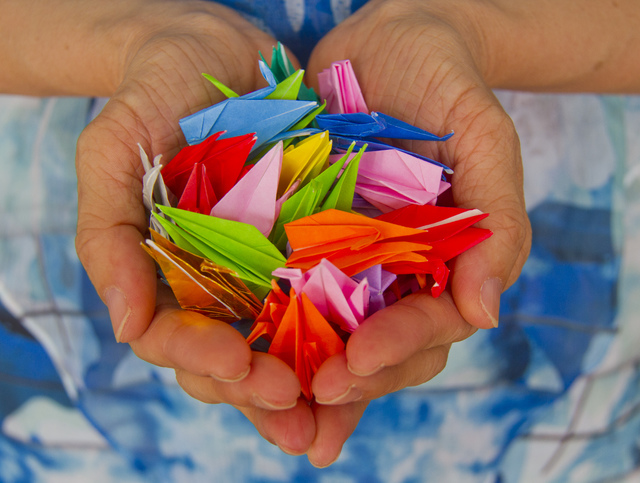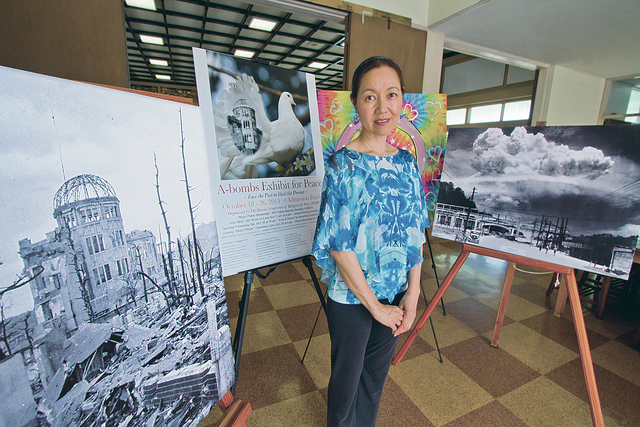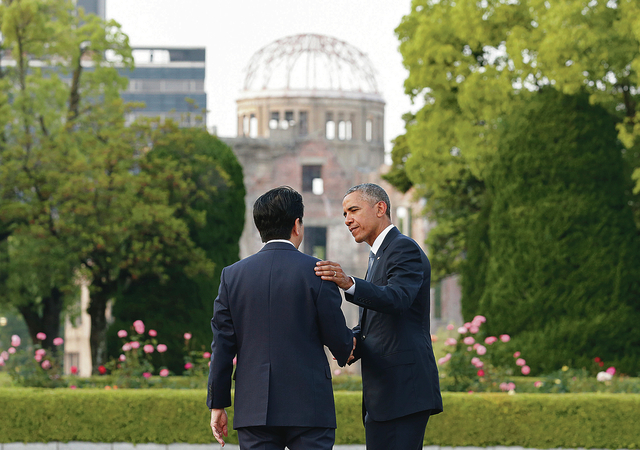For Honolulu peace activist Masago Asai, President Barack Obama’s recent visit to Hiroshima fulfilled a long-held dream.
Seven years ago, as coordinator of President Obama’s Peace Prayer Project, sponsored by the Hawaii Conference of Religions for Peace, she wrote an open letter to the president.
It read, in part, “The purpose of this letter is to make a request of you to pay an official visit to Hiroshima and Nagasaki to extend prayer for the dead and the sufferers of the bombings at both Peace Memorials. … Because your presence most definitely would heal the souls of the victims tremendously, but also because I am convinced that you possess a passionate devotion to humanity and the spiritual energy to enlighten the people in a global perspective.”
More than 2,500 people and 39 religious organizations signed a petition accompanying the letter, dated Oct. 1, 2009.
Last week Obama became the first sitting U.S. president to tour the site where tens of thousands were killed by the world’s first atomic bomb attack on Aug. 6, 1945.
Asai was born in Nagasaki, where the second atom bomb was dropped three days later. “I was raised in the midst of many victims of the bombing — those who … died of various forms of cancers,” she said.
In an interview with the Honolulu Star-Advertiser, the computer analysis executive and naturalized U.S. citizen called Obama’s visit “a dream come true.”
“I asked him to go and offer your sincere prayer for peace,” Asai said. “He really gave a quiet prayer, closing his eyes. That’s what I really wanted. I was so grateful.”
Among Obama’s remarks on the occasion, she was most struck by his statement that “technological progress without an equivalent progress in human institutions can doom us.” Asai said that she agrees, adding that the world needs a “moral revolution” before global peace can become a reality. “We really are destroying ourselves by our creations. Our inner growth has to be educated and enlightened,” she said.
Obama’s visit to Hiroshima touched off some criticism from observers who viewed it as a kind of apology for the bomb’s carnage when its use has also been said to have saved countless lives as Japan surrendered soon afterward, bringing an end to World War II.
To this Asai responded, “I respect others’ opinion, but I only can tell his visit has impact on people of the world” to work toward peace. She especially hopes it inspires young people who might not have learned in school about the destruction of the bomb and how it led to a nuclear arms race.
In 2014 Asai coordinated an exhibit for the Hawaii Conference of Religions for Peace titled “A-Bombs Exhibit for Peace: Face the Past to Heal the Present.” It was viewed by some 700 students and that year received the Healing Role in Hawaii Award from The Interfaith Alliance Hawai‘i. In 2006 Asai was honored as a hero by the Hawai‘i Forgiveness Project for her advocacy efforts.
Also in her 2009 letter to the president, Asai shared a message from her mother, who was 14 years old when exposed to radiation within half a mile from the center of explosion.
Her mother’s wish, Asai said, is “that nobody in the future will suffer the way we have. That literally was a living hell; we have already suffered enough for everyone. Therefore, I sincerely hope that this tragedy will help us learn how to build our world with peace.”






